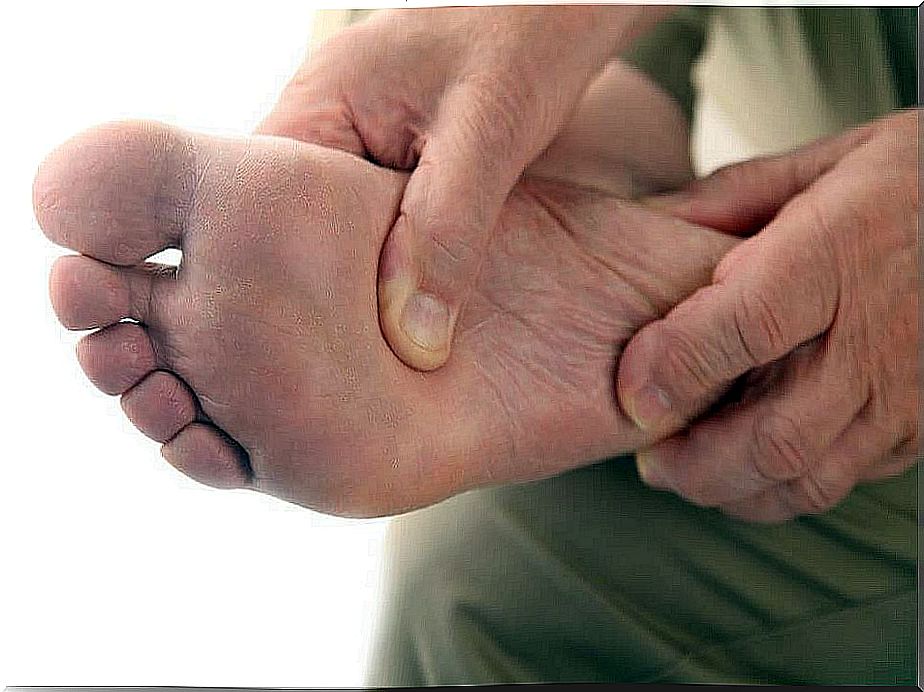How To Care For A Diabetic Foot At Home?
Lack of control of glucose levels in the blood affects the health of the feet in patients with diabetes and increases the risk of injuries and amputations. What care must be taken on a daily basis?

To avoid serious complications after being diagnosed with sustained hyperglycemia, that is, permanently high levels of glucose in the blood, it is important to modify your lifestyle. Likewise, it is essential to adopt a series of measures to care for the diabetic foot at home. Here are some tips to keep in mind.
Difficulties from high glucose levels can reduce blood flow to the lower extremities, deteriorating the arteries and nerves in the feet. This problem can develop gradually, especially when the necessary controls are not carried out to regulate the sugar to a normal state.
As a result of this, the sensitivity in the area decreases and the chances of developing ulcers, cracks and other wounds that can be a source of dangerous infections increase.
How to take care of the diabetic foot to avoid complications? Bearing in mind that the risks are constant, the keys that we share below must be taken into account.
What is the diabetic foot?

Having sugar levels above normal carries many health complications. Among these, one of the most common and dangerous is the diabetic foot. This condition can be caused by a reduction in the blood supply to the legs (vasculopathy) or by an involvement of the lower nerves (neuropathy).
Both problems cause a series of symptoms that, as a study published by Dermatology and Wound Care maintains , affect the quality of life, since the patient loses their sensitivity to a great extent and is exposed to injuries that take time to heal.
Although the symptoms may vary depending on the level of severity with which the pathology develops, it is essential to attend and monitor it at all times so that it does not get worse.
It should be noted that poor diabetic foot control can lead to ulcers and infections that, in severe cases, end up being the reason for limb amputation, according to a Mayo Clinic publication.
Tips for caring for a diabetic foot at home
According to data from the World Health Organization, more than 80% of diabetic foot amputation cases can be prevented with basic treatment and care.
Medical control of diabetes is the main measure to avoid these complications. However, as a complement to this, experts indicate that each individual should adopt some habits that reduce risk.
First of all, it is essential to avoid as much as possible any injury that involves the feet, since wounds take a long time to heal and can serve as a gateway for an infection. In addition, this care must be permanent, because even if there are no obvious injuries or symptoms, the risk remains high.
Check feet every day
The daily check of the feet allows to detect if there is any abnormality that needs to be treated in a special way. For this reason, even if there is no noticeable problem, it is important to dedicate time to them. Try to be aware of symptoms such as:
- Sores or ulcers
- Blisters or cracks.
- Hardness and deformities.
- Hematomas and swollen veins.
Wash and sanitize
One of the basic care to reduce the risk of infections in the feet is to wash them every day with disinfectant products, which must be specifically prescribed by the doctor.
This measure allows to eliminate bacteria, fungi and other microorganisms that, in case of injury, can cause more serious problems.
Avoid cigarette

A 1994 study published by the British Medical Journal confirms that tobacco use is one of the factors that increases the risk of diabetes in men. In part, this is due to the narrowing of the arteries caused by tobacco, which is why all patients with diabetes should avoid it.
Use moisturizing products
To take care of the diabetic foot, it is necessary to purchase moisturizing products that help protect your skin. Its daily application allows to avoid calluses and cracks to minimize the risk of infection. Consult with a dermatologist to prescribe the most suitable for your case.
Cut the nails
The nails in patients with diabetic foot should be cut in a straight line, so that they do not become embedded in the skin. The cut should not compromise the corners or cuticles.
Wear comfortable shoes
The use of comfortable and ventilated shoes is one of the most recommended measures to take care of the diabetic foot, according to the American Diabetes Association. This helps control inflammation and prevent infection.
Ideally, its interior is composed of smooth materials, without blunt elements, so that the skin can breathe without problems.
Avoid high-impact activities
According to what a recent study published by Progress in Cardiovascular Diseases confirmed , daily physical exercise is one of the habits that help regulate glucose levels in patients with diabetes.
However, due to the complications that the feet can present, it is essential to check that the activities chosen do not have an impact on them. To avoid calluses or injuries, it is best to choose disciplines such as:
- Swimming.
- Cycling.
- Yoga.
- Pilates.
Caring for the diabetic foot is a daily task
In conclusion, to take care of the diabetic foot, it is of great importance that all patients with high sugar take action. Diabetes is a chronic condition that must be managed on a daily basis; The perseverance and discipline of the patient are key to preventing complications.
In relation to the diabetic foot, the daily precautions are intensified a little more, but they are worth it. Thorough care, in conjunction with medical check-ups, avoids more serious situations.








